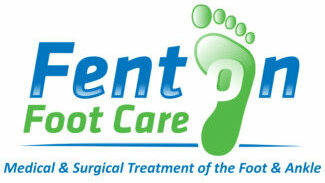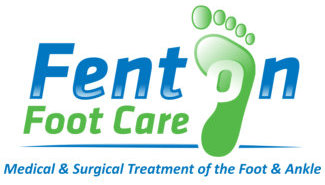 A bunion is an enlargement of the metatarsophalangeal joint (the joint at the base of the big toe). It is created when bone or tissue of the joint moves. Bending of this altered joint is the source of pain, which is made worse with the joint normally supporting much of the body’s weight while walking. Other typical symptoms of a bunion are: a firm bump on the outside edge of the foot at the base of the big toe, redness, swelling, pain, corns or other skin irritation, and restricted or painful movement of the big toe.
A bunion is an enlargement of the metatarsophalangeal joint (the joint at the base of the big toe). It is created when bone or tissue of the joint moves. Bending of this altered joint is the source of pain, which is made worse with the joint normally supporting much of the body’s weight while walking. Other typical symptoms of a bunion are: a firm bump on the outside edge of the foot at the base of the big toe, redness, swelling, pain, corns or other skin irritation, and restricted or painful movement of the big toe.
Short-term pain relief is easy to do at home. Examples of ways to ease the pain include over the counter bunion pad placed around the bony prominence, wearing shoes with a wide and deep toe area, avoiding high-heeled shoes, and using ice to reduce the swelling. The best treatment for bunion pain is to see your podiatrist. Depending on the size and pain of the bunion, nonsurgical or surgical treatments are both options. Early management tries to relieve pressure on the bunion and stop increased joint deformity. These methods include taping, anti-inflammatory injections, physical therapy, and orthotics. If surgery is required, the surgeon will remove the bony enlargement and restore the natural joint form.
While some foot types have an increased risk of forming bunion, the following list provides tips on preventing bunions. As always, see your podiatrist if you have questions or pain due to a bunion.
- Wear comfortable shoes that mold to your feet
- Always fit the larger foot if you have different sized feet when buying shoes
- Avoid high-heeled shoes over two inches tall
- Wear shoes with plenty of room in the toe area


